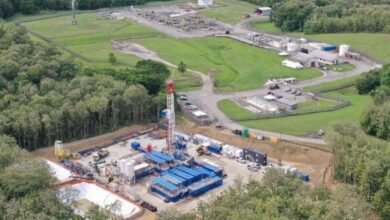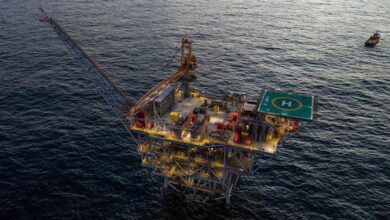Reality check: The world’s energy transition has not really started yet
By Linda Hsieh, Editor & Publisher
In typical consumer media, it’s common to see headlines touting the growth of renewable energies like wind and solar, using words like “soaring demand,” “growing momentum” and “dynamic expansion.” Oftentimes these reports will be accompanied by commentary on the fall of oil and gas, either about how demand is “dropping sharply” or how it’s anticipated to “slow almost to a halt” in the coming decades.
For the typical energy consumer who only skims the headlines, it’s easy to see why they end up with a distorted, unrealistic perspective on the energy transition.
“If we just stopped investing in fossil fuels and went 100% on renewables, the energy transition can happen overnight.” That’s reflective of sentiments I hear when talking with people outside of our industry.
But here is the reality: From 2017-2022, renewables met only half of the new demand for energy globally, despite the rapid buildout of renewable capacity. That’s according to a new report published in October by DNV (read more on p11). This means that, so far, renewables have only gone toward helping the world to meet increases in demand. They haven’t even made a dent in reducing existing demand for fossil fuels.
“Globally, the energy transition has not started,” Remi Eriksen, Group President and CEO of DNV, said. While efforts to move toward lower-carbon forms of energy have started at multiple levels (sector, national, community), he pointed to the fact that renewable energy has not begun to replace fossil fuels in absolute terms.
The global energy system
is more fragile than we think
This doesn’t mean that investments in renewables haven’t been worthwhile; it simply means that, contrary to popular belief, oil and gas will remain an essential part of the global energy mix for longer than people seem to think.
This is an important message to get across to the wider public – including policymakers and investors – because our industry needs their support in order to effectively deliver energy to the world. We need supportive governmental and regulatory policies, and we need capital to invest in our people and technologies.
“The global energy system is more fragile than anyone thought,” Ann Davies, Senior VP Wells at BP, said in her keynote address during the 2023 IADC World Drilling Conference. She noted how the disruption of a relatively small amount of oil and gas after Russia’s invasion of Ukraine triggered skyrocketing energy prices and cost-of-living crises across multiple countries. Even in developed nations like the UK, “the fears about keeping the lights on are very, very real today,” she noted.
A study released by the World Bank in 2022 also noted that, primarily due to the COVID-19 pandemic, nearly 90 million people in Asia and Africa who had previously gained access to electricity could no longer afford to pay for basic energy needs. Not to mention there are still 733 million people globally who have no access to electricity.
“A personal belief of mine is that access to energy is a human right,” Ms Davies said. “Stopping investment in oil and gas would be hugely disruptive, not only for today but for many years to come.”
While the world must continue to invest in renewable energies, it must also continue to invest in oil and gas, including low-carbon technologies to reduce emissions from drilling and production. This means the world needs to take an “and” approach to energy, not an “or” approach, Ms Davies urged. Let’s help to spread that message. It bears repeating. DC
Click here to access DNV’s “Energy Transition Outlook” report.




